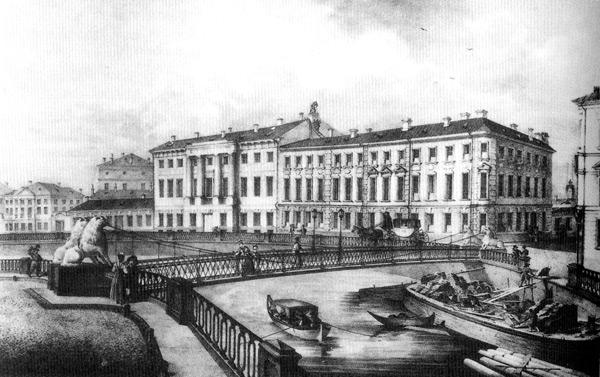


The history of museum’s building is exciting and somewhat troubled. It was built in 1842–1843 to the design of Zakhar Krasnopevkov to house the so-called siezzhii dom of the Second Admiralty District (St Petersburg), which was a specific type of administrative building in Russia, combining the functions of a local police department and a fire station. The design of a siezzhii dom always followed a traditional layout: it was a closed rectangle with an inner courtyard, half of the structure was occupied by a fire brigade, and the other half by a police station. There was detention space as well there for people of low social class.

The building housed a police department until the end of the 19th century. It was then rebuilt and enlarged, first by the architect-engineer Anton Dominikovich Fialkovsky and later by the architect Aleksander Pavlovich Maksimov. After the architectural alterations a part of the construction facing the Griboyedov Canal was occupied by the police archive, and the other, facing the former Officers' Street (now Decembrists’ Street) accommodated the St Petersburg Criminal Investigation Police. Russia's first Criminal Police Museum was founded on this site in the early 20th century.

In 1917, the building endured hard times. The police archive was destroyed and the actual structure burned down. The part of the architectural complex overlooking Officers’ Street was redesigned and transformed into a communal house for proletarians. It is now a block of flats.
The building overlooking the Griboyedov Canal was renovated after the fire to accommodate in 1920 the Governorate Archive Bureau, which was transformed into the Leningrad Communist Party Archive in 1929. The Party Archive was evacuated to Chelyabinsk in the beginning of the Great Patriotic War. It was relocated to a new building in Smolny Street upon return to Leningrad in 1944. The printing house for cartographic products became a new owner of the building, which in turn gave way to the Archive of the City Court in 1998. In 2007, art occupied part of the architectural complex laden with grim memories. Maly zal (the small hall) of the Manege Central Exhibition Hall was opened here. Contemporary art has added energy of playful festival lightness to the space. Sharing the site proved to be inconvenient for both organisations. The archive initiated a long process of relocation, which ended in December 2015. As a result, the Museum of 20th–21st Century Art of St Petersburg (MASP) started developing the entire area, filling it with dynamic contemporary culture.